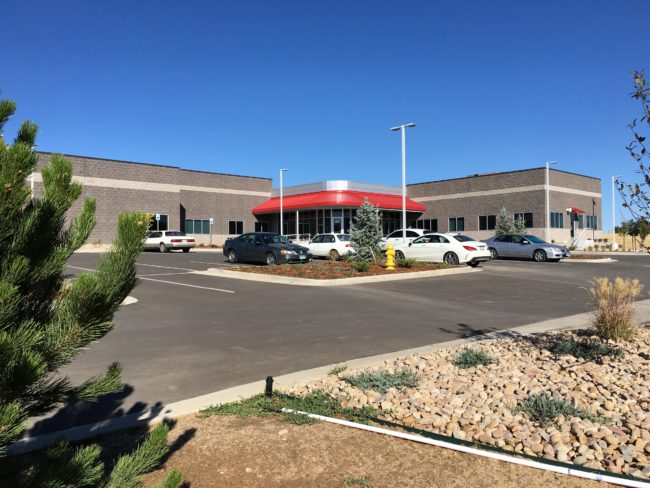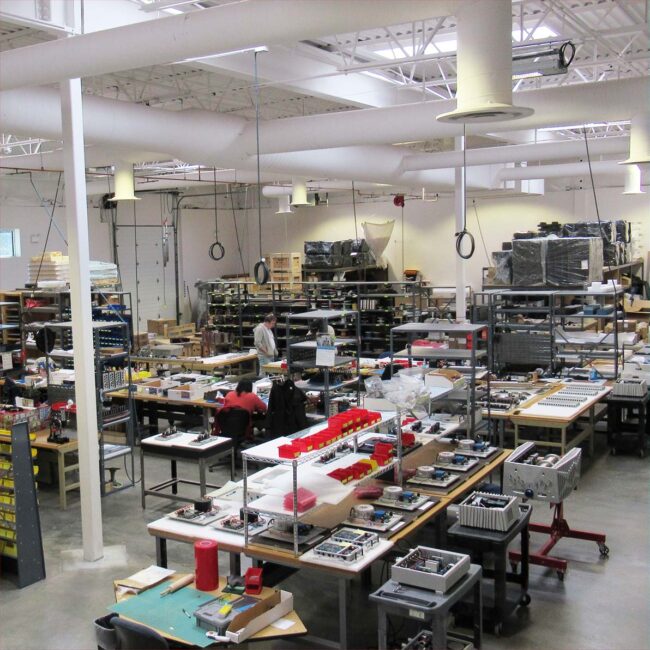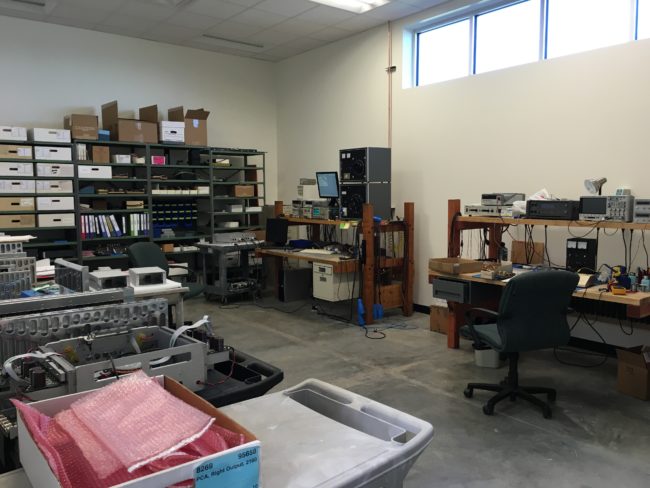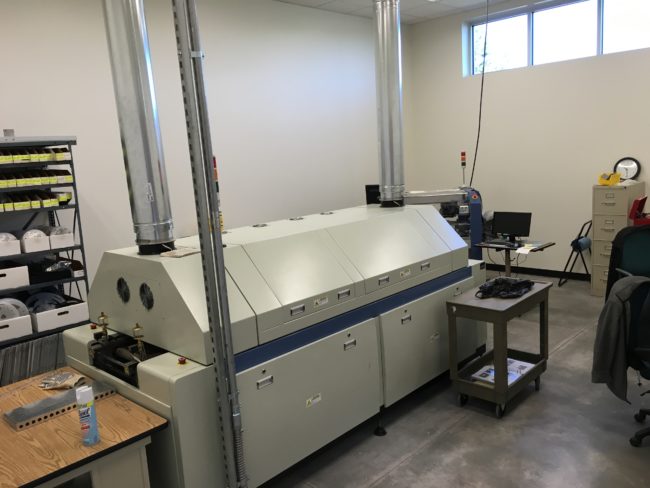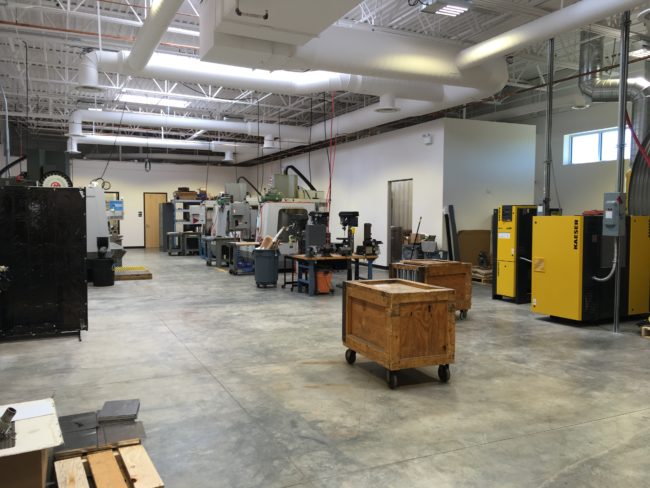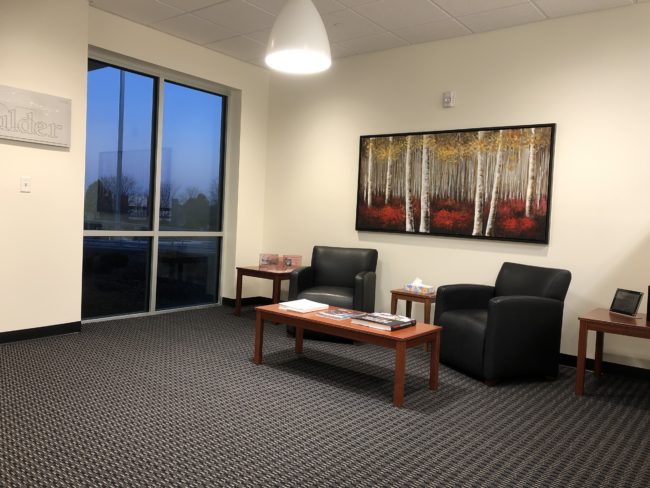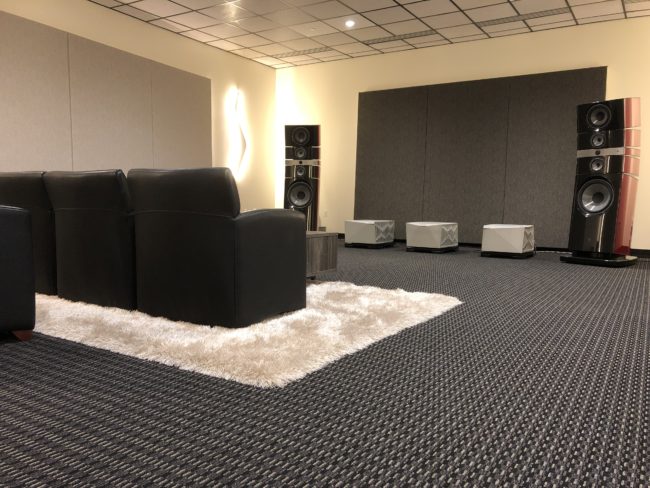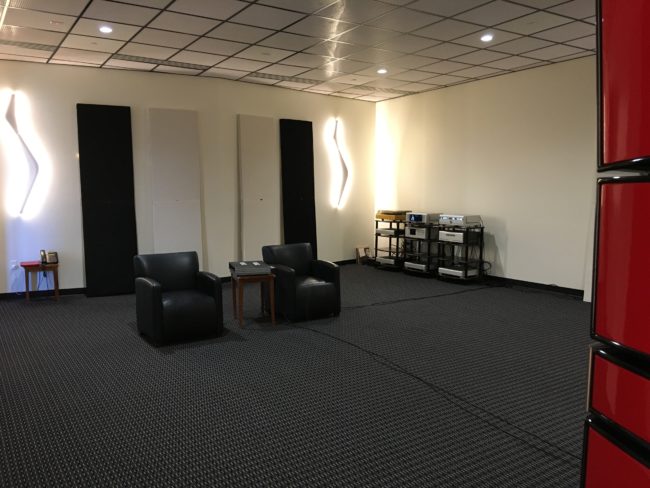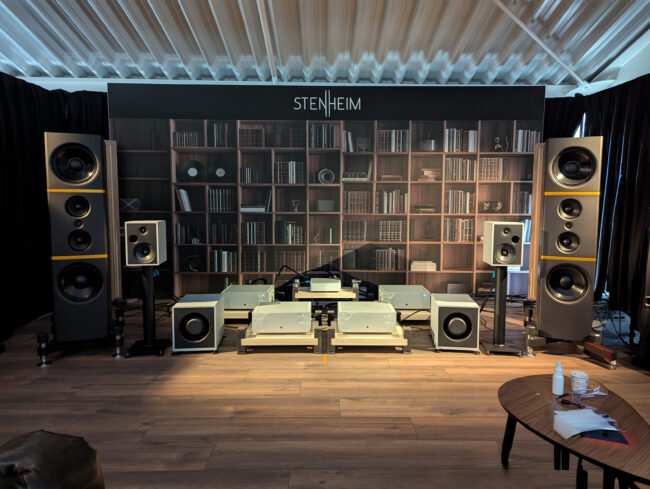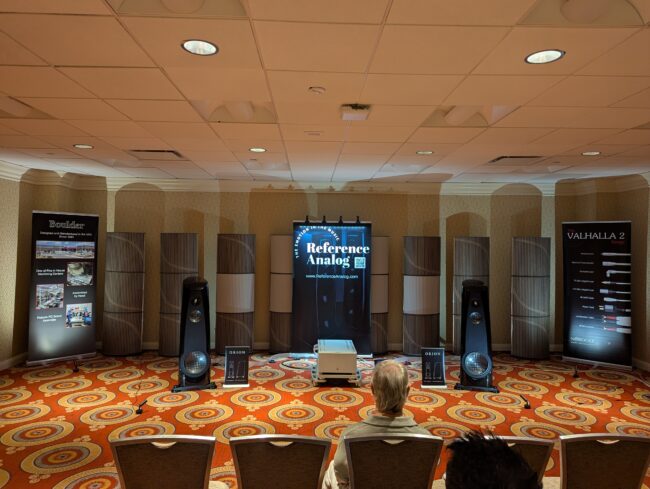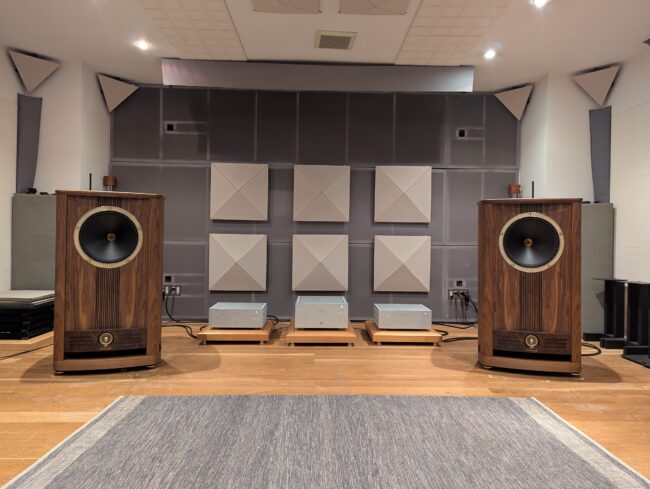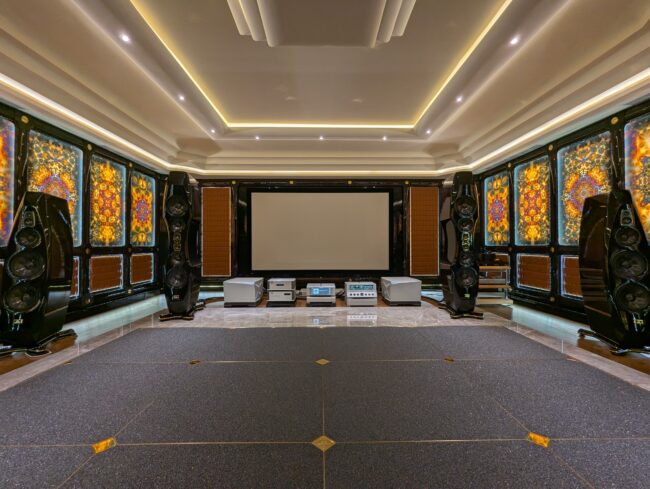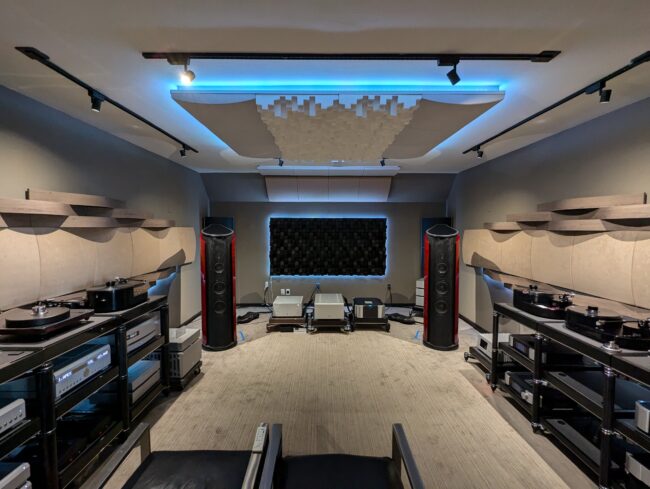History
-
70s
Before Boulder
Long before there was “high-end,” “luxury,” or “high-performance” audio, there was the center of all high-quality recorded sound: the world of professional recording and broadcast. This is where Boulder began. In the 1970s Jeff Nelson was a largely self-taught electronics savant who owned a recording studio and built mixing boards for other studios.
Later as an engineer at Pacific Recorders, Jeff was responsible for developing a pivotal piece of equipment in the broadcast industry: the Tomcat cart (tape cartridge) machine. Built for reliability and sound quality, for years the Tomcat was the established high-performance cart machine in broadcast studios throughout the world. Over 3,000 were sold over its production lifetime.
-
84
The Early Days
In 1984 Boulder debuted the 500 Power Amplifier. The ruggedly built 500 quickly found popularity in numerous professional applications where people who listen for a living found it unmatched in clarity and accuracy. Many went to recording studios, loudspeaker manufacturers, and broadcast facilities where they still continue to perform day after day in grueling duty cycles.
The 500 amplifier was quickly followed by the 500AE (“AE” denoting “Audiophile Edition”), which was adopted by home audio connoisseurs.
-
89
The M Series
Boulder designed and released the L5M, 102M and 500M. The M Series products were an evolution of an already exceptional product line, combining the electronic innards of the AE products with a new satin and polished aluminum fascia that appealed to the eyes as much as the sound appealed to the ears.
-
95
A Turning Point
The iconic 2000 Series was introduced—the materialization of an abstract ideal of what components would be if they were perfect. If a particular part could improve a product, then the design required that part. No corners cut, no shortcuts taken, no limitations placed on the engineering team. Cost did not figure into the equation before the design and optimal performance criteria were achieved. The 2010 Preamplifier, 2020 Advance D/A Converter, 2050 Mono Power Amplifier and 2060 Stereo Power Amplifier defined the essence of “high-end.”
-
98
Moving
After years of steady growth, the company relocated its production facilities from Superior, Colorado to the heart of Boulder’s commercial and industrial sector.
The larger manufacturing space included room for a dedicated machine shop and Boulder acquired its first Haas CNC vertical machining center. Developing metal fabrication and finishing capabilities in-house was an important milestone. A successful family machining business was in Jeff’s history, so Boulder’s move in this direction, while unusual for an audio manufacturer, was a familiar one.
-
99
The 1000 Series
The 1000 Series debuted with the Boulder 1060 Stereo Power Amplifier. The 1060 shared many of the features of the larger 2000 Series, beginning with a non-resonant machined chassis and its own version of Boulder’s distinctive aluminum heatsinks. The 1060 design was quite conservatively rated at 300 watts per channel. With this kind of power, it was nearly as tolerant of demanding program material and difficult loads as its much larger predecessors.
-
00
The One That Does It All
The Boulder 1012 DAC Preamplifier—an analog preamplifier, digital-to-analog converter and phono preamplifier in one chassis—was first shown at the Consumer Electronics Show. A few months later it was named Component of the Year by Japan’s prestigious Stereo Sound magazine.
-
02
The Stunning 2008
The pièce de résistance for the year was Boulder’s 2008 Phono Preamplifier, a product for which Stereophile magazine created the “A+” rating for electronics and called it “one of the 100 most important products in the history of audio.”
At its introduction the enthusiasm for this esoteric component surpassed even Boulder’s expectations. Originally created for a handful of 2010 owners, it was presumed that a limited production run of a few pieces would be built upon request. Instead, the 2008 had a waiting list of customers for a good portion of its lifespan.
-
03
More Trophies
Boulder unveiled the 1010 Stereo Preamplifier, later named “Product of the Year” by Ultra Audio magazine” along with the 1060 Stereo Amplifier. A more traditional two-channel preamplifier, the 1010 was identical to the Boulder 1012 DAC Preamplifier but without the digital-to-analog conversion circuitry.
-
05
Growing the Audience
Boulder released its first entirely new product line in six years: the 800 Series. The 800 Series was the first generation of products designed completely with Boulder’s new CAD (Computer Aided Drafting) design system.
The 800 Series debuted with the 850 Mono Amplifier, a small, 200W powerhouse in a half-width chassis. The unique size lent itself to much easier installation in custom applications. The 850 also proudly demonstrated that Boulder could offer its legendary performance in a much smaller package without scaling back performance.
-
07
A Boulder First
In September Boulder quietly released the 865 Integrated Amplifier with the intent that it would find a niche in places where space or budget prohibited the use of separate products. Instead, the 865 exceeded expectations and became a viable solution not just for those with system limitations, but for music lovers of all kinds. It quickly collected more review requests than any other product in Boulder’s line up.
-
08
Redefining Digital
The Consumer Electronics Show in Las Vegas was the site of the first appearance of the 1021 Network Disc Player. The 1021 was one of the largest undertakings in the company’s history. It was also the first complete source component from Boulder.
The truly innovative aspect of the 1021 was that it didn’t need a disc at all to make music: When connected to a network, the 1021 could decode and play music files from a media server or computer anywhere in the home with no loss of realism. Ultra-high resolution music file playback from either streaming or a disc was simply icing on the cake.
-
09
Improved Manufacturing
In the midst of the engineering phase of the 1008 Phono Preamplifier, a new state-of-the-art surface-mount circuit board manufacturing system was acquired and installed at the factory. Every aspect of manufacturing was now under Boulder’s control, leaving no production detail unaccounted for. Circuit board quality was vastly improved and metalwork did not leave the machine shop unless it was flawless. The production team also created assembly manuals to guarantee unit-to-unit production consistency. Nothing was left to chance that could affect the potential satisfaction of Boulder customers around the world.
-
11
More is Better
Prior to the 3050s, there had been no such thing as a true reference-level audio product. There was always a compromise, shortcoming or limiting element of the design that wasn’t taken as far as possible. Even products with an extremely high price tag had the tiniest bit of cynicism in the results.
And then came the 3050s.
The new 3000 Series was Boulder’s all-out endeavor to find the limits of audio reproduction. It would also fundamentally change the way every future Boulder release would be developed.
-
13
Revising 2000
It had been eighteen years since the release of the original 2000 Series’ 2010 preamplifier. In that time, Boulder had undergone a complete vertical integration and become entirely responsible for its own manufacturing. Technology had also marched forward, so it was time to reengineer the first products that had established Boulder as the preeminent manufacturer of high-performance home-audio electronics.
In January the world got to see the new 2100 Series for the first time. The all-new 2110 Preamplifier debuted alongside the new 1000W 2150 Mono Amplifiers which would eventually earn Stereophile magazine’s “Amplification Product of the Year” Award. In May the 600-watt-per-channel 2160 Stereo Amplifier was released, followed by the 2120 Streaming D/A Converter the following year. The lineup of revised 2100 Series products was complete. Distortion and coloration were lowered to make the new 2100 components the most transparent and revealing products in the world (with the exception of Boulder’s own 3000 Series, of course).
-
15
Building a Home
Boulder embarked on the largest project the company had ever undertaken: construction of a new, 23,000-square-foot facility that would more than double factory space. The company had outgrown the existing building and the extra room needed to grow was no longer available. A three-acre plot of land was purchased in the nearby town of Louisville, Colorado, approximately 15 minutes east of Boulder. Architectural and design work began in earnest.
It was decided that the new factory would be used as both an optimal location to build the world’s finest audio products and a way to showcase these abilities to visitors. Boulder’s beautiful new space would reflect the culture of the company and the quality of its people and products.
-
17
A Giant Leap Forward
The new factory substantially increased design efficiency and once again Boulder revisited another 18 year old icon with spectacular results: the 1000 Series became the 1100 Series, which quickly gathered awards from Japan, the United States, Poland, France, England, Hong Kong, and China, among others.
The first new product to appear in the 1100 line was the 1160 Stereo Amplifier, a 300W powerhouse that one Boulder dealer remarked is “the biggest advance in performance Boulder has ever made.” Quickly following the 1160 was the 1110 Preamplifier, a technologically loaded and fully programmable unit that could easily be integrated into the latest generation of automated smart homes.
In addition to new technology, the 1100 debuted a new design detail: curves. The 1100 had subtle curves on all edges of its heatsinks and also featured new front panel designs highlighted with three-dimensional topographical maps of Flagstaff Mountain, located just west of Boulder, Colorado
-
18
A Very Small Big Debut
At the 2018 Munich High End Show in May, Boulder showed the world the 508 Phono Preamplifier for the very first time. Designed from the onset to be the most design efficient product in Boulder’s lineup, the 508 became the smallest and most cost-effective product the company had released in more than 25 years. A product stripped down to the very essentials with balanced circuitry packed in casework hewn from a solid block of metal, the 508 managed the impossible: sounding huge, refined, and powerful in a tiny little chassis.
-
19
A Long Awaited Revision
In 2018, Boulder set out to revise the entirety of the 800 Series, but how do you follow one of a company’s most successful products? By improving on it in every way—and that’s exactly what the Boulder 866 Integrated Amplifier delivers.
With 200W per channel, refined circuitry for greater current, reduced weight, and more efficient manufacturing, the 866 raises performance across the board. It adds external IP control, options for both traditional and streaming systems, and a dedicated Boulder app for effortless management.
Most importantly, the sound is unmistakably Boulder: powerful, clean, transparent, and true to the music.
-
22
The 812
Building on the worldwide success of the 866, Boulder expanded the 800 Series with the 812 – a DAC, preamplifier, and headphone amplifier in one refined package.
Drawing on over 35 years of experience, the 812 DAC/ Preamp/Headphone Amplifier delivers precision, performance, and the reliability expected of every Boulder product. It also marks Boulder’s first dedicated headphone amp, featuring a sophisticated amplifier circuit, four connection types, adjustable sensitivity via the Boulder Controller app, and enough power to drive virtually any headphones—or multiple pairs at once.
Equally at home as a DAC, preamp, headphone amp, or all three, the 812 is one of Boulder’s most versatile and accessible products to date. Whether you’re a long-time Boulder owner, a headphone enthusiast, or building your first system, the 812 offers unmatched performance and value.
-
23
The 861
Crafted entirely in Boulder’s Colorado facility, every board and chassis reflects the company’s hallmark expertise and uncompromising standards. The result is true Boulder performance in a compact, accessible package.
The 861 Stereo Power Amplifier is Boulder’s first amplifier of its size—and it punches far above its weight. The best way to understand it? Listen for yourself.
For those in smaller living spaces, with highly efficient systems, or who admire the sound of the 866 Integrated but prefer separates, the 861 Stereo Power Amplifier is the perfect answer. As the newest addition to the 800 Series, the 861 shares the exact dimensions of the 812 DAC Preamplifier, creating a strikingly cohesive pairing both in form and performance.
-
24
A Proof of Concept
One problem that has always existed with traditional Class-A amplifiers, and that is wasted heat. Boulder brings together the rare mix of technical mastery and the creative vision needed to craft a power amplifier that is visually striking, sonically uncompromising, and very efficient.
Loudspeakers demand power and control—whether at lifelike levels or in the quietest passages. For over 40 years, Boulder has delivered exactly that, with amplifiers trusted in the making of some of the greatest recordings in history.
The 1151 Mono Amplifier carries this legacy forward, offering a solution to the inefficiencies in typical Class-A amplifiers by introducing the “Smart Current Technology” Output Stage without sacrificing sonic fidelity.
-
25
The Application
The original 1100 Series Amplifiers were Class A/B designs. The 1151 Mono Power Amplifier served as the proof of concept for Boulder’s innovative Smart Current Technology biasing scheme, demonstrating its benefits without overshadowing the legacy of the 1100 Series.
Following a launch tour through Hong Kong, Taiwan, and Japan, feedback from Boulder’s distributors made it clear: this groundbreaking circuit needed to be brought into the existing stereo models. The result was the creation of the 1162 and 1163 Stereo Power Amplifiers—modern evolutions of the 1100 Series, now enhanced with Smart Current Technology.
The Future
Under Jeff Nelson’s leadership, Boulder has grown and prospered for over 40 years. The company has also retained the invaluable experience of a number of employees who have been with the company since its earliest days. These dedicated craftsmen, technicians, designers, and engineers breathe life into the original Boulder vision and make it a reality. Their enthusiasm ensures that the Boulder philosophy will continue as long as lovers of music and film desire to listen with the very finest audio components in the world.
With a new manufacturing space and ample room to grow, the future will see Boulder continue what Jeff started: identifying current shortcomings and then creating what will inevitably become the industry’s standard by executing every detail, from concept to completion, better than anyone else.
The Factory
In August of 2016 Boulder moved to a new manufacturing facility in Louisville, Colorado. At 23,000 square feet, the new factory is more than twice the size of the previous building and enables engineering and assembly operations to be more productive and efficient.
The current Boulder factory features the latest energy conscious lighting and ventilation systems, automated access and locking systems, three dedicated listening spaces, and a new production and machining area to improve what is already the highest standard in the industry for design, fabrication, and assembly.
Tours are offered with advance notice and on a limited basis. For information about visiting the factory, please contact Boulder at (303)-449-8220, x 110 or at sales@boulderamp.com.
